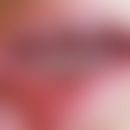DefinitionThis section has been translated automatically.
Chemotherapy drug.
Half-lifeThis section has been translated automatically.
0,3–0,5 h
You might also be interested in
Spectrum of actionThis section has been translated automatically.
Citrobacter spp., Enterobacter spp., Enterococcus faecalis, E. coli, Klebsiella spp., Proteus spp., Providencia spp., Serratia spp., Staphylococcus spp.
IndicationThis section has been translated automatically.
Treatment and prophylaxis of uncomplicated urinary tract infections.
Dosage and method of useThis section has been translated automatically.
4 times 0.05-0.15 g/day p.o.
Undesirable effectsThis section has been translated automatically.
Nausea, vomiting, liver dysfunction, cholestasis, lung changes to pulmonary fibrosis, allergic reactions, BB changes, polyneuropathy, dizziness, headache.
InteractionsThis section has been translated automatically.
Prevention of absorption by magnesium salts, delayed absorption by simultaneous food intake.
ContraindicationThis section has been translated automatically.
Pregnancy, lactation, infants up to 3 months of age, oliguria, renal failure, hemolytic anemia, hepatitis, pulmonary fibrosis, polyneuritis, glucose-6-phosphate dehydrogenase deficiency, polyneuropathy.
PreparationsThis section has been translated automatically.
furadantine, uro-tablines, nifurantine
Note(s)This section has been translated automatically.
Induction of a sweet syndrome after ingestion of nitrofurantoin has been described.
LiteratureThis section has been translated automatically.
- Callen JP et al (2002) Neutrophilic dermatoses. Dermatol Clin 20: 409-441




